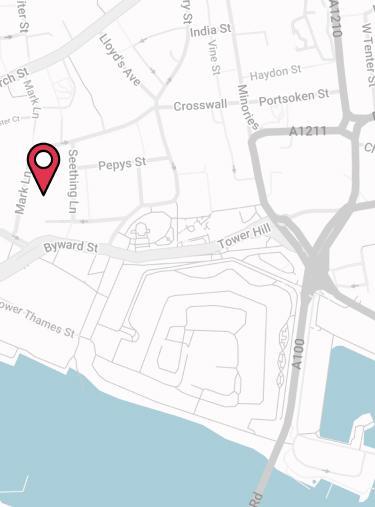Comparing Critical Illness Insurance is vital to ensure you get the best possible cover. As a product, it sounds quite simple. If you develop a serious illness, it’ll pay out a tax-free cash lump sum.
However, Critical Illness policies can be very complex. They vary across the market and there are a number of factors that need to be considered before choosing which cover is right for you.
Our clients are often left wondering how to even begin comparing policies. That’s why we’ve written this guide. We want you to have a clear list of all the things you should be considering when comparing different policies and providers. So, read on to find out how to choose the best Critical Illness policy for yourself.
Importance Of Comparing Critical Illness Insurance Policies
As we mentioned, Critical Illness Insurance is a complex financial product. There are multiple providers, who have unique approaches to risk, and that offer different levels of cover.
Because of this, it’s important to compare them against one another. Just because one provider would be right for your friend or neighbour, doesn’t mean that it would be right for you.
Some providers will offer you higher benefit amounts, others will insure you for more conditions. And some will provide children’s cover as standard. The point is, before choosing a policy, you need to know what’s on offer, as well as what your needs are.
As well as this guide, we’ve also provided some extra resources below that you may find useful:
- We have a selection of FAQs and guides which will answer some of the most common questions we get about Critical Illness Insurance
- If you already know what you are looking for and just want to compare quotes, you can use our handy Critical Illness quote tool. It will provide you prices from the UK’s leading providers, such as Legal & General, Aviva and Royal London.
Comparing Critical Illness Insurance Policy Options
When it comes to choosing your Critical Illness Cover, there will be a number of variables you will need to compare between policies. We’ll go through these so you have a better idea of what all your policy options are.
Comparing Providers
Before getting stuck into the specific policy details, we need to acknowledge that every Critical Illness provider is different. They all offer slightly different variations of cover, so the provider you choose will have a big impact on the policy and price you’ll end up with.
When comparing insurance providers, there are a few points to consider:
- Policy Coverage
Each insurer sets their own policy terms, cover limits, and has their own attitude toward risk. This means that what ‘Critical Illness’ looks like with one provider could look very different with another
- Financial reputation
It doesn’t hurt to do a little research into the company you’ll be paying your hard-earned money to. Have they had any less–than-favourable press? Or, worse, any fines for misconduct? If so, this will be a big red flag
- Customer reviews
Similarly, it doesn’t take much to see how an insurance company’s customers rate them. You can often check out what existing customers are saying on Reviews.co.uk or Trustpilot. This is a good way to gauge their service and reliability
- Claim payout rates
Another important thing to look at when it comes to comparing providers is the rate of claims they’ve paid. The higher, the better. Providers do classify their claims statistics differently; some remove fraudulent claims from their data, but others don’t. So, while claim rates aren’t the be-all and end-all, it’s still something to consider.
As each provider is different, you can also expect the cost of premiums to vary between each. To give you an idea of how much providers can differ, we’ve provided an example below. This shows the cost of a Life & Critical Illness policy for an individual who:
- Is a healthy non smoker
- 30 years old
- Wants £250,000 of cover for 25 years
- Decreasing cover.
Different Types Of Cover
Another important factor to consider when choosing a policy is the type of cover you take out. This will often be based on why you need the cover to begin with. There are a number of different options which we’ve outlined below.
Level Term Insurance
With a Level Term Insurance policy, your benefit amount is fixed for the length of the policy. If you took out £100,000 of cover, this will be the amount you’ll receive for a claim, regardless of whether you claim on the first day or the last day of your policy term.
Essentially, it gives you a reliable guarantee of the amount of cover you’ll receive. You might choose this option if you’re repaying the interest only on a mortgage. This way, if you become critically ill, your claim amount will repay the loan in full.
Decreasing Term Insurance
If you have a repayment mortgage or other loan, you might take out Decreasing Term Insurance. With this option, your amount of cover decreases each year, often at a rate of around 8%. The idea is that as you repay your loan, your liability decreases, and so does your cover amount.
The type of cover you choose will also impact the amount you pay. To give you an idea of how it could vary, we’ve provided example premiums for level and decreasing cover below. The quotes illustrate the monthly premium for each type of cover, based on a person who:
- Is a healthy non smoker
- 30 years old
- Wants £250,000 of cover
- Needs a 20-year term.
Increasing or Index-Linked Cover
If you’re taking out Critical Illness protection to cover costs and expenses, you might think about setting it up on an increasing basis. This means your cover will go up each year in line with the Retail Price Index (RPI) rate of inflation.
Index-linked protection helps to prevent your claim from losing value in real terms over time, as a result of inflation. This can happen, particularly if you have a policy in place for two or three decades.
You also might consider this if you know that your salary regularly increases with the cost of living, as the premiums will also go up to pay for the rising cover amount.
Family Income Benefit
Taking out your policy as a Family Income Benefit means that if you claim, your funds will be paid out differently. Rather than a single lump sum, your provider will pay out a regular income for the remaining term of the policy. This is designed to cover your lost earnings if you’re no longer able to provide for your dependents.
For example, let’s say you’re the main breadwinner in your household. You might take out a policy with an income of £5,000 per month for a 20-year term. If you became critically ill while covered, your insurance would pay out the monthly benefit for the remaining policy term.
As you can see, this kind of cover has a decreasing risk to the provider because the amount they might have to pay out reduces over time. In other words, if you claimed after 5 years, the insurer would pay out your £5,000 income monthly for the remaining 15 years. But if you claimed after 18 years, they’ll only pay £5,000 a month for 24 months.
In most cases, Family Income Benefit is cheaper than a lump sum insurance policy. But not all providers offer it.
This option is mostly geared towards people with families. You can hold multiple Life and/or Critical Illness protection policies, though. So, some people opt for a decreasing policy to repay their mortgage, and then a Family Income Benefit to pay for their family’s ongoing bills and expenses.
Level of Cover
You need to think about how much Critical Illness cover you need. If you became seriously ill, what costs would you need to cover? This could be your living expenses, mortgage payments, or making adjustments to your home or lifestyle after your illness.
Some providers offer unlimited cover, while others have limits of £2 million or £3 million. For most of us, these limits offer us more than enough. The important thing is to have a figure in mind for how much cover you need.
Example
To show you how the amount of cover you choose can impact what you pay, we’ve included an example below. The figures show the cost of monthly premiums for two different cover amounts, based on someone who:
- Is a healthy non smoker
- 30 years old
- Wants a 25-year term
- Decreasing cover.
As you can see, the cover amount you choose has a substantial impact on the premium you’ll pay. If you have a generous budget for your protection and are happy to spend more, this may not be a problem. But if you’re on a more specific budget, think about how much Critical Illness cover you’ll realistically need.
Policy Term
Another factor to consider is how long you’ll need the policy for. All providers have a minimum term they’ll offer, often two or in some cases five years. Again, this factor will come down to why you’re taking out the policy.
For instance, if you’re taking out a policy to cover your mortgage, your insurance term will probably match your mortgage term. But you might have another milestone in mind, and want a different term.
Example
So that you can see the cost difference between two different policy terms, we’ve provided an example below. The amounts shown are for monthly premiums based on a healthy, 30-year-old non-smoker:
Standalone VS Combined Policies
You can just take out a standalone Critical Illness Policy. However, not all providers will allow you to do this. Many will only offer a combined Critical Illness and Life Insurance Policy.
This is because standalone Critical Illness Cover can be risky. If you don’t survive for the necessary time period after a diagnosis (this is usually 10 or 14 days depending on the provider), you won’t receive your claim. Also, Life Insurance gives you cover against terminal illness, which isn’t guaranteed to be classed as a critical condition.
Number Of Conditions Covered
One huge feature you’ll want to look at is how many critical conditions the policy you’re looking at covers. Critical conditions are usually broken down into three categories:
- Full payment conditions
If you receive a diagnosis for a full condition, it means the provider will pay out your full critical illness benefit and your policy will end. These tend to be serious illnesses such as advanced forms of cancer, major heart conditions, strokes, and major traumatic injuries
- Additional payment conditions
These additional critical illnesses tend to be more common, but less life-threatening. For example, less advanced or low-grade cancers, and more minor surgeries. If you develop one of these conditions, your provider will usually pay out an additional but smaller claim. It leaves your full benefit untouched, ready to be used later if your health worsens
- Partial payment conditions
Some providers offer partial payments for certain conditions. With these, you’ll receive a payout that’s a portion of your full benefit. This means you might be left with around 75% or 80% of your full benefit in case of a more serious claim later on.
As a general rule, the more conditions you’re covered for, the better the policy’s coverage will be. In our experience, comprehensive policies are far more suitable for purpose when compared to a more basic protection policy.
Type Of Premiums
When you take out your policy, you’ll need to decide whether you prefer guaranteed or reviewable premiums. There’s an important difference between the two:
- Guaranteed
As the word suggests, your monthly premiums are guaranteed to remain the same for the policy term
- Reviewable
While they may be cheaper initially, reviewable premiums can go up or down over the term of the policy. Providers might change the price relative to medical inflation, their own financial performance, and any claims trends in a given year.
If you’re taking out an increasing policy, your premiums will rise in line with inflation. But you’ll still choose whether you want them to be guaranteed (i.e., they’ll only rise with inflation), or reviewable (i.e., they’ll rise by inflation and be reviewed by your provider).
Total Permanent Disability
Another key factor to look out for is whether a policy covers Total Permanent Disability (TPD). This is a condition on some policies and covers you should you be unable to ‘totally and permanently’ work due to sickness or injury.
Depending on the provider and product, TPD might come as a standard definition, or it might be an optional condition you can include for an extra cost. It’ll be set up under one of two definitions:
- Own Occupation
You’re considered completely disabled if you’re permanently unable to do your own job ever again
- Work Tasks
You’ll meet the criteria if you’re unable to do a certain number of daily living tasks independently. These include walking, climbing stairs, lifting, bending, writing, and getting into and out of a car.
SPECIALIST TIP! 🤓
Total Permanent Disability makes up around 3% of all Critical Illness claims. In fact, it’s notoriously difficult to claim for. Most providers cover other conditions that might apply instead, like ‘loss of independence’.
Policy Exclusions
As well as thinking about what a policy does cover, it’s important to be aware of what it doesn’t cover. There are a few standard exclusions that all Critical Illness providers are likely to have. These include trying to claim for any conditions which are a result of:
- Alcohol, drug or other substance abuse
- Illegal or criminal actions
- HIV/AIDS
- Self-inflicted injuries
- Unreasonable failure to follow medical advice
- Travel to certain territories which are not considered “acceptable countries”
- Any injuries gained through war, civil commotion, or rioting.
These can vary, and each provider will have their own exclusions. But still, it’s important to be sure of exactly what you’re agreeing to so you understand when your policy will and won’t pay out a claim.
Other Policy Factors To Consider
As well as the core policy factors we went through above, there are a number of other things to consider when looking at policies, including the:
Type Of Definitions Used
As well as the number of critical conditions an insurer covers, you’ll want to look at how comprehensive their definitions are. There are a few things to look at here.
ABI+ Definitions
Firstly, you should know that the Association of British Insurers (ABI) sets the standard for all critical definitions. So, all providers’ critical definitions will meet this standard. But some providers offer ABI+ definitions. This simply means that the definition is better than this standard.
For example, an ABI definition of a certain critical condition might state that you need a specific operation to treat your condition. An ABI+ definition might mean that the provider will pay the claim if you need any type of surgery to treat the condition.
Grouped Conditions
Similarly, some providers ‘group’ conditions together. This means that they cover fewer actual conditions, but the conditions have very broad definitions.
In other words, one provider might cover separate conditions for each form of heart surgery they’ll pay out a claim for. Another provider might have one simple definition: ‘heart surgery’. But the detailed definition can apply to lots of different operations.
Survival Period
All providers require you to survive for a certain period before you can successfully make a Critical Illness claim. This is known as the survival period, and it’s often either 10 or 14 days.
This isn’t likely to be your most important criteria, but it’s still good to think about. The shorter your survival period, the sooner you’ll receive your claim.
Children’s Critical Illness Cover
Whether a policy includes children’s cover is another important feature to look for. It protects any natural, step, or adopted children you may have if they become critically ill. This could play a big role in figuring out which product offers the best Critical Illness Cover for you.
Coverage Limits
When it comes to Children’s Critical Illness Cover, there are a few important cover limits to look out for:
- Age of children
Depending on the provider, children’s cover could start from 24 weeks in utero, from birth, or from 30 days old. It might stay in place until age 18, or age 21, if the child is still in full-time education. The oldest expiry age for child cover on the market is currently 23, regardless of education status
- Conditions covered
In most cases, your child will be insured for the same conditions as you. But sometimes total permanent disability and diabetes mellitus type 1 are excluded for children. Some providers will pay out on certain child conditions, like Down’s syndrome or cerebral palsy. You might also find cover for certain birth defects, like cleft lip or cleft palate
- Amount of cover
You’ll also want to check the maximum amount of cover your child might receive if they claim. Providers will often pay a percentage of your benefit, such as 25% or 50%, up to a certain amount; £25,000, £30,000, or £35,000, for example. This is important, as it’ll limit the amount your child can claim. Some providers will double the claim amount for children where both parents have a policy that includes child cover, so look out for features like this
- Other features
Lastly, what other features does children’s cover offer? Is there a funeral benefit if your child passes away? Or a hospitalisation benefit to help you pay for travel and accommodation if your child is kept overnight? And what about cover for any pregnancy complications? If these are important areas where you want cover, make sure you look out for features like this.
Enhanced Payments
There are other features to consider, too. For example, some providers pay out extra money on top of your full benefit if you suffer from a major, life altering condition. In other words, they’ll pay an enhanced claim for conditions like blindness, deafness, or loss of a limb. This could double your claim in certain circumstances, helping you to cover living costs or make vital home changes.
If this is important to you, make sure you make a note of it when thinking about the type of policy you need. Then you can seek out the provider that meets as many of these needs as possible.
Advanced Surgery Payments
Another thing to think about is Advanced Surgery Payments. Some providers will pay a claim as soon as you’re on a waiting list for certain surgeries. This means you wouldn’t need to wait to have an operation before getting your benefit amount.
Different surgeries are covered, depending on which policy you look at. But often this feature will apply to operations for certain heart conditions, like an artery bypass, or valve replacement or repair.
Add-Ons
If you’re looking for a highly comprehensive policy, you’ll want to consider which features a provider will offer as an add-on. These typically come at an extra cost, as we’ve mentioned when looking at Children’s Cover and Total Permanent Disability.
Other popular add-ons include:
- Waiver of Premium
The provider will waive the cost of your monthly premiums if you’re unable to work due to ill health after a certain time period. There are one or two providers that include a premium waiver in their Critical Illness policy as standard.Others will charge you to add this onto your policy
- Fracture Cover
Some providers will let you take out fracture cover, which pays out a small extra claim if you break a bone. A fracture claim might typically be anywhere from £2,000 to £6,000, depending on the severity of the break
- Life Cover Buyback
If you take out a combined Life & Critical policy, your provider might allow you to buy back your Life Protection after a Critical Illness claim. You’ll often have to wait for 12 months before you can use this option, but it can provide valuable protection at a difficult time.
Free Additonal Benefits
There’s not only add ons to think about, but the free benefits that come included in a policy, too. All providers offer value-added services to enhance your experience as a policyholder. These often include things that help you maintain a healthy lifestyle or support you through medical treatment. For instance:
- A digital GP
- Nurse support services
- A second medical opinion
- Physiotherapy
- Mental health support
- Annual health checks
- Support helplines.
While these benefits probably won’t be at the top of your list in terms of priority, it’s good to think about whether any of these are very important to you.
Personal Factors To Consider When Comparing Critical Illness Insurance
As you probably know, it’s not only your policy choices that will impact the coverage you get. Your personal details will also need to be taken into account. We cover these in more detail below.
Age
The age you are when you apply for a policy will determine the rate you pay. All insurance providers base their costs on age, and the older you are when you apply, the more you’re likely to pay.
This is because, sadly, the risks of us falling ill increase as we grow older. It’s natural that our health gradually declines, and we’re more likely to claim on our protection policies as a result.
Example
To show how your age can impact the premiums you pay, we’ve provided some examples below. The quotes show the monthly cost of a policy for a person of various ages who:
- Is a healthy non smoker
- Wants £250,000 of Decreasing cover
- Needs a 20-year term.
Smoker Status
When it comes to Critical Illness Insurance, smokers will tend to pay a lot more. We know that smoking increases the risks of becoming severely ill, so providers will charge more for cover. To help show this, we’ve gained an example below.
Example
The below table shows the monthly cost of a policy for a smoker and a non-smoker. The costs are otherwise based on a person who:
- Is 30 years old
- Generally healthy apart from smoking
- Wants £250,000 of Decreasing cover
- Needs a 20-year term.
As you can see, there’s a significant jump in price for smokers. In the above example, a smoker will pay a total of £190.56 more per year than a non-smoker. Over the 20 year policy term, that adds up to £3,811.20 more than a non-smoker!
Medical History
Insurance providers will take any pre-existing medical conditions into account when deciding whether to offer Critical Illness Cover. If you have any past or present health issues, your terms might be affected.
Common issues include an unhealthy height to weight ratio and previous illnesses; particularly serious ones. While it’s not impossible to get cover if you’ve suffered a critical condition in the past, your insurer will probably need a lot of medical information. Then, they’ll be able to make a decision.
If insurance underwriters see insuring you as a greater risk, you might pay higher Critical Illness premiums. This is known as a premium loading.
Occupation
Insurers will take your occupation into consideration when you apply for cover. If you work in a role that’s considered risky, you might pay more for your cover.
For instance, if you travel a lot for business or work around heavy machinery, you’ll probably be at a higher risk of a serious illness or injury. This could also result in a premium loading.
Hazardous Hobbies
Similarly to doing a high-risk job, if you have hobbies that could be considered dangerous, insurers might increase your costs with a premium loading. There are a few different hobbies that might be considered higher risk:
- Diving
- Flying
- Parachuting or gliding
- Bungee jumping
- Freestyle rock climbing or mountaineering
- Motor sports
- Highly physical sports like rugby, boxing, or martial arts.
Any premium loadings are based on a case-by-case basis. As we mentioned before, each provider has their own attitude to risk. They’ll ask more questions about your hazardous hobbies to establish how much experience you have and how much time you spend doing your hobby.
In some cases, insurers might add an exclusion to your terms instead of a premium loading. This means you’ll pay the same standard rates, but there’ll be a limit on when you claim. For example, if you played rugby, you might be able to claim under any critical condition unless it has been caused by playing rugby.
What are the top 3 Critical Illness claims?
80% of all Critical Illness claims in the UK are due to cancers, heart attacks, or strokes, according to the Association of British Insurers (ABI).
The highest of these is cancer, by a pretty big majority. In fact, cancer accounts for around 60% of all critical claims. According to Cancer Research UK, over half of all new cases are cancer of the lung, bowel, breast or prostate. These forms caused around 45% of all cancer deaths in the UK between 2017 and 2019.
The second highest reason for critical claims is heart conditions. Having looked carefully at providers’ claim statistics, we can see that heart related illnesses make up between 10% and 20% of insurers’ critical claims.
And thirdly, strokes make up around 7% of critical illness claims. These conditions are commonly known as the ‘Big Three’, because insurance providers pay out most for these illnesses.
You can read more about the main reasons for critical illness claims if you’re concerned about the most common conditions.
Is Critical Illness Insurance worth it?
Lots of people wonder whether they actually need Critical Illness Cover. It sits in a strange area in that it’s a product you hope you’ll never need. But if you do need it, it’s often invaluable.
Statistically speaking, most of us will get ill at some point in our lives. Data from Cancer Research UK shows that 1 in 2 people born after 1960 will be diagnosed with some form of cancer during their life. Similarly, the British Heart Foundation has found that over 1 million people in the UK have survived a heart attack, while 2 million have survived a stroke or transient ischaemic attack (TIA).
As we grow older, the risks of us falling seriously unwell only increase. And tragic accidents can happen at any time. For many people, getting Critical Illness insurance will provide a financial safety net to help them through a difficult time, making it very worthwhile. And if it’s worth getting, it’s worth making sure it meets all your needs.
Critical Illness can be a complicated product, so we always recommend speaking to an adviser. You can chat with a friendly specialist on our team on 02084327333 or by emailing help@drewberry.co.uk.
Is Critical Illness Insurance expensive?
Compared to other types of personal protection insurance, yes. Critical Illness is known to be one of the more expensive protection products out there, simply because the risks of people needing to use it are so high.
The actual cost you’ll pay depends on lots of different factors. We have a guide all about how much Critical Illness costs if you want to know more.
Having said that, we’ve helped thousands of clients find protection policies that meet all their needs—not only in terms of cover, but budget as well. Working with a protection specialist gives you someone in your corner who has access to the best terms and can negotiate on your behalf.
Compare The Top UK Critical Illness Insurance Providers
As a completely independent and impartial broker, we compare insurance from all the top UK providers. The table below gives you a snapshot of the main comparison points for the best Critical Illness insurers in the market.
Our specialist in-depth review of each of the UK's leading providers
Comparing Providers’ Claim Payout Rates
As we mentioned before, one useful factor to look out for is each insurer’s payout rates for critical illness claims. In other words, how many claims each provider successfully pays out on, compared to the number of attempted claims.
It’s helpful to consider the claims rates alongside each provider’s terms and policy features. If they have a high claim rate but don’t offer the coverage you need, it won’t be worth buying.
IMPORTANT NOTICE! 🧐
You shouldn’t use successful claim statistics alone to decide which insurer offers the best Critical Illness Insurance. It’s best to use the table as a rough guide to compare across the industry as a whole.
To help you compare, we’ve put the most recently published claims statistics for the leading UK Critical Illness insurance providers below.
At the time of writing, only some providers have released their 2022 claim statistics. We’ll keep updating these as and when they’re released, so you can see where they rank in terms of payouts.
Going Direct VS Speaking With An Adviser
There are two ways you can go about taking out a Critical Illness policy. The first is to apply directly with your chosen provider. And the second is to apply through an independent advisor. Each is different, but one has much more protection than the other.
Applying Directly To An Insurer
Everyone hopes that they’ll never suffer from a critical condition. But if the worst does happen, you need to be sure that the policy will pay out.
If you go directly to a provider, your policy is classed as a non-advised sale. This gives you no financial protection if the cover turns out to be unfit for purpose later on. If you haven’t read the terms or disclosed certain information, you might not be able to make a claim in the future.
Speaking With An Independent Adviser
Having a specialist on your side saves you the time and trouble of researching everything yourself. It also offers you financial protection.
When you take out a policy through an adviser, it’s known as an ‘advised sale’. This means that your advisor takes responsibility for the cover being suitable. If it turns out not to be fit for purpose later on, you have financial protection through the Financial Conduct Authority.
Not only that, but financial advisers have access to more policy features, enhanced cover, and better rates. With some providers, you won’t be able to take out comprehensive cover, or add-ons like Total Permanent Disability, Waiver of Premium, or Fracture Cover without consulting an adviser.
Specialist advisers, like our team here at Drewberry, know this kind of protection inside and out. By listening to your needs, we can find the most suitable policy for you and do all the heavy lifting to make sure your cover is smoothly put in place.
Making Sure You Get The Best Cover
If you have higher risk factors, like a health issue or hazardous lifestyle, our specialists know where to get you the best terms. All providers have different attitudes to risk. What one sees as high risk, another may not.
Even if you’re not a high risk to insure, the chances are that you still have specific needs a policy should fulfil. In this guide alone, we’ve looked at getting cover for specific conditions, for your children, and the extra features and benefits that can help you stay healthy.
The type of policy that’s right for you probably won’t be right for your friend, neighbour, or anyone else. There’s no ‘one size fits all’ when it comes to personal protection. On top of that, Critical Illness can be a complicated product. That’s why we always recommend you get advice.
Get Specialist Advice & Compare Critical Illness Quotes
From everything we’ve covered here, you can see that taking out a policy on your own can be a bit of a minefield. Critical Illness Insurance can vary widely depending on your cover choices and personal circumstances.
Our specialists are on hand to answer your questions and find you the best possible terms. Like the rest of our clients, you can enjoy peace of mind that you have the best cover available to you.
To speak to one of our protection advisers, pop us a call on 02084327333, or email help@drewberry.co.uk.
Why Speak to Us?
When it comes to protecting yourself and your finances, you deserve first-class service. Here’s why you should talk to us:
- There’s no fee for our service
- We’re an award-winning independent insurance broker, working with the leading UK insurers
- You’ll speak to a dedicated specialist from start to finish
- 4072 and growing independent client reviews rating us at 4.92 / 5
- Claims support when you need it most
- We’re authorised and regulated by the Financial Conduct Authority. Find us on the financial services register.


























